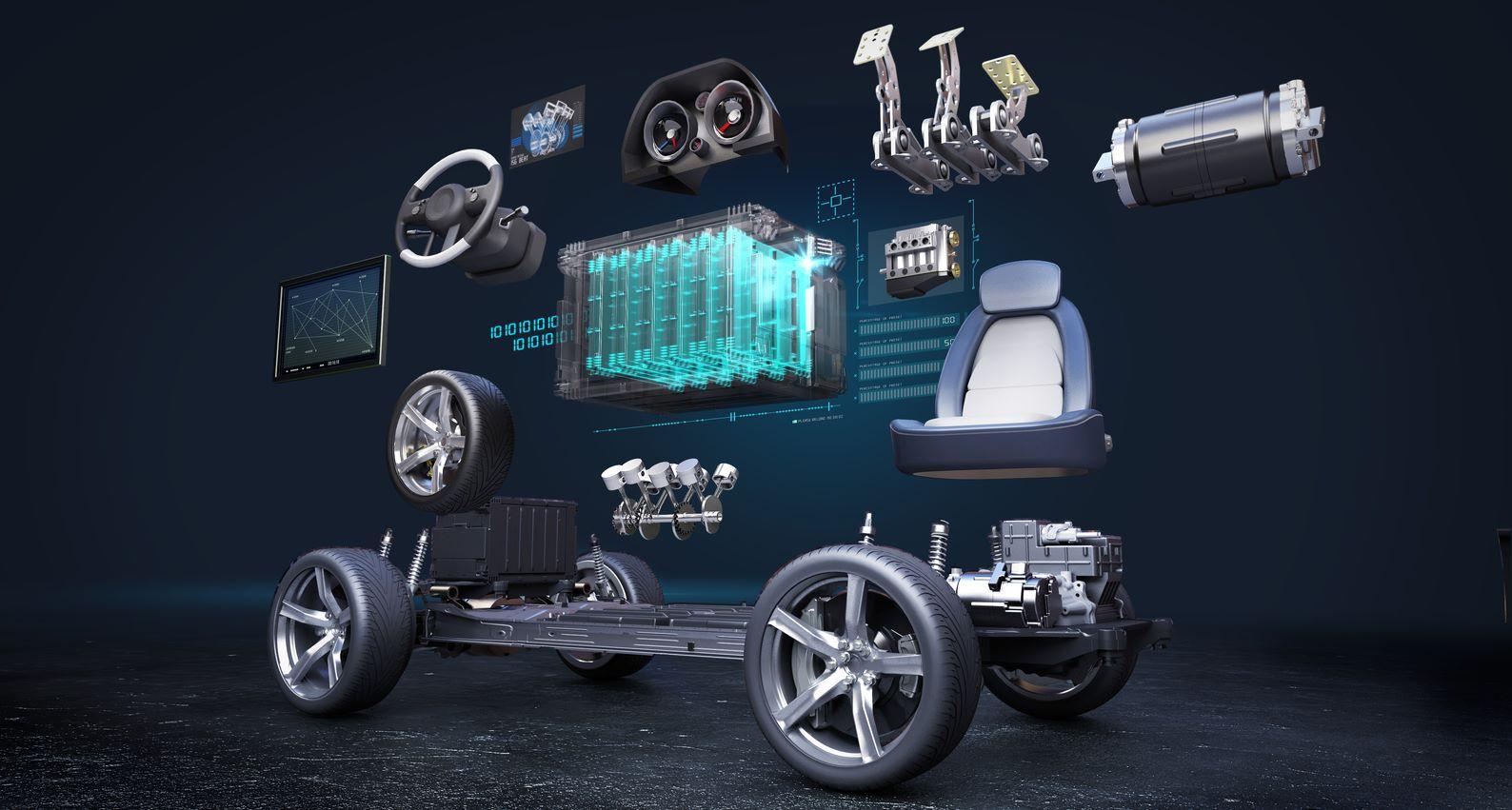Are Solid-State Batteries the Future of Electric Vehicles?
Published on 14 Jan, 2021

Liquid lithium-ion batteries have some inherent shortcomings which limit the potential of electric vehicles. Solid-state batteries, an emerging technology, could deliver improved performance at a comparatively low cost. The technology is still under development and automobile companies are vying to be the first to introduce this technology in the market. Will solid-state batteries completely replace liquid lithium-ion batteries and be the future of electric vehicles?
Are Solid-State Batteries the Future of Electric Vehicles?
A potential alternative to liquid lithium-ion batteries (LIBs) are solid-state batteries (SSBs) which use solid electrodes and electrolytes rather than liquid or polymer electrolytes. The adoption of SSBs is expected to be a gamechanger for electric vehicles (EVs) as these batteries offer high performance and safety at a lower cost.
SSBs have been under research for some time and are finally ready to enter the EV market. Several automobile companies are racing to be the first to launch the revolutionary battery.
The global SSB market is estimated to expand from USD 62 million in 2020 to USD 483 million by 2027, at a CAGR of 34.2%. One of the main growth drivers is expected to be the rising application of SSBs in EVs.
Why solid-state batteries?
SSBs have many advantages such as lower flammability, higher-potential cathodes, improved cycle characteristics, higher stability, increased life span, ease of fabrication, better electrochemical stability, and higher energy density compared to liquid batteries. However, the most attractive feature of SSBs is their ability to increase the range of EVs by 80% compared to LIBs.
One of the leading developers of SSBs, QuantumScape, has shared the performance data for the batteries based on its R&D activities. The company has managed to overcome critical issues related to charging time, cycle life, safety, and operating temperature, among others, making SSBs ideal for EVs.
Major advantages of SSBs are given below.
- Increased safety – SSBs use flame-retardant electrolytes, making them less susceptible to fire accidents. This makes them a much safer option than LIBs, which use liquid electrolytes; battery leakage pose a threat to the entire vehicle.
- High energy density – The energy density of SSBs can be increased per kg as these batteries are 80–90% thinner and have higher decomposition voltage than LIBs. This results in enhanced energy density and consequently high power output. This, in turn, could significantly raise EVs’ driving range, thereby eliminating the requirement for frequent charging.
- Fast charging – Liquid electrolytes tend to heat up due to fast charging which is risky for vehicles. As SSBs do not have liquid electrolytes, they provide higher safety compared to liquid LIBs, making them highly attractive in the EV market.
- Low cost: Installation and maintenance costs of conventional liquid LIBs are very high. This is mostly attributed to scarcity of raw materials such as cobalt. SSBs are considered comparatively cost-effective.
The manifold benefits of SSBs have resulted in several automobile brands in the Original Equipment Manufacturers segment investing in the technology:
- QuantumScape, a Bill Gates-backed start-up has received USD 100 million from Volkswagen for the development of SSBs. The company has already worked on a prototype single-layer pouch cell. QuantumScape has reported attractive features such as battery recharge up to 80% in 15 minutes; this would enable a car to cover thousands of miles even in extreme temperatures.
Volkswagen is aiming to manufacture one million EVs by 2025, including SSB-powered vehicles. - Solid Power, a company working on SSBs, has received an investment of USD 20 million from BMW. The automobile company plans to launch 12 different models of EVs by 2025.
- Toyota is leading the race for the launch of SSB-powered EVs. It has already initiated its pilot projects. However, a fully commercialized vehicle is expected to enter the market only by 2030. Toyota has also formed a joint venture with Panasonic to develop innovative next-generation SSBs for EVs.
- Hyundai has invested in a US-based start-up, Ionic Materials, which develops solid-state electrolyte materials. Hyundai plans to launch SSB-powered EVs by 2025.
Current challenges
The biggest challenge facing SSBs is related to the dynamics of the solid electrolyte and electrode interface (cathode (or anode)/electrolyte interface). In solid electrolytes paired with lithium anodes, the lithium metal has been found to penetrate to the Li/solid electrolyte interface during electrodeposition and extend through the bulk of the solid electrolyte, causing short circuits and battery damage. Additionally, Li/ solid electrolyte interfaces are thermodynamically unstable. Structural and chemical changes naturally occur upon contact and under electrochemical operation; this could alter ion transport characteristics and mechanical integrity.
The development of high-performance all SSBs would require greater control over the evolution and reactivity of the solid electrolyte/electrode interface.
Outlook
Despite being neither safe nor sustainable, LIBs are ruling the EV market. These batteries are easily flammable, release toxic gases, and are contributing to the depletion of cobalt reserves. These issues make SSBs a promising alternative to LIBs.
Apart from EVs, another area where SSBs could be used is miniaturization of consumer electronics. Manufacturers of wearable devices and consumer electronics such as Samsung (South Korea), LG Electronics (South Korea), and Panasonic (Japan) would require miniature power sources. These companies are developing flexible, small devices with high power density, a requirement that could be fulfilled by thin-film batteries, like SSBs.
Accordingly, SSBs are increasingly attracting interest and receiving significant investments for further research. The market is poised to grow and these batteries may well be the future of EVs.
